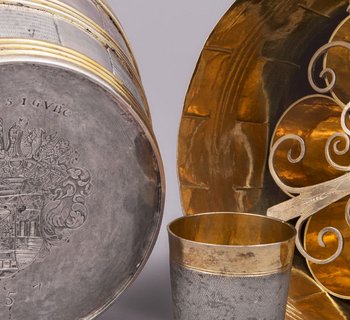[Translate to English:] text
Yet it was also an age in which the use of exotic materials was especially popular – for example the shell of the turban snail indigenous to the Pacific and Indian Oceans, or that of the cephalopod known as the emperor or chambered nautilus. Furnished with opulent silver mounts, they enjoyed the utmost popularity at the Saxon court and made their way into the Dresden cabinet of curiosities as exquisite collectors’ items. It was only later that they were moved to the Grünes Gewölbe, which today possesses the most remarkable holdings of this kind. The Wettin electors also made a point of acquiring examples of Indian mother-of-pearl work. As highly coveted as they were expensive, these objects were imported to Europe by Portuguese trading companies and furnished here with elaborate silver mounts.


